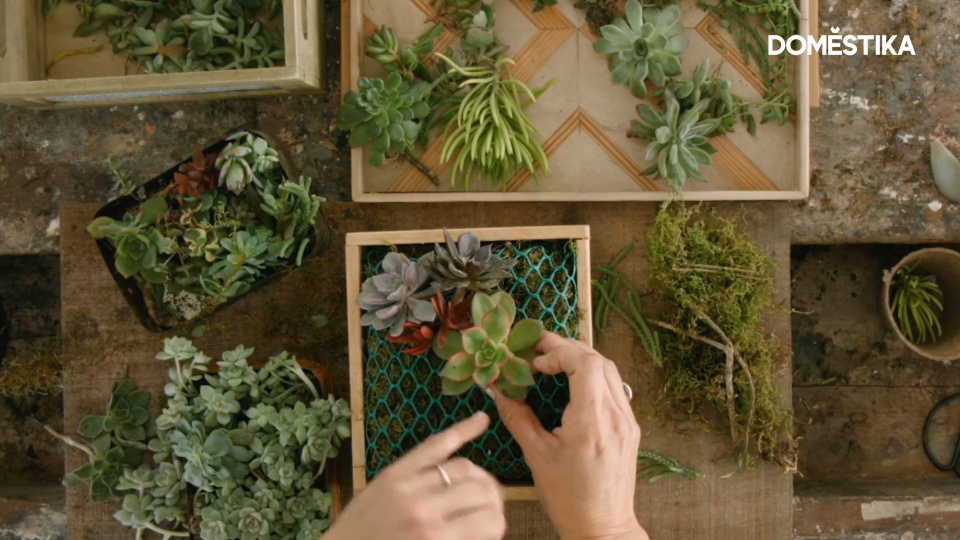Botanical Design Tutorial: How to Design Frames with Succulents

Discover the best ideas to design and compose a painting with succulents of different shapes, colors and shades with Compañía Botánica.
Botanical design uses nature as an artistic tool: the succulents and their forms are converted into drawings and pigments, whose great variety and versatility can contribute to our creations.
In this tutorial, Ceci from Compañía Botánica (@ciabotanica) gives us some design and composition ideas to take advantage of the succulents in our botanical design projects. You can see the video here:
4 tips to create your paintings with succulents
1. Monochromatic frame composition
Although there are many varieties of succulents in different colors and shades, we should consider choosing all plants of the same color to create a chromatically smooth composition.
Remember that the color of the succulents we choose will determine the type of care they will need. For example, if we decide to create a composition with succulent greys, we will have to place our piece in a very luminous place, otherwise it can get damaged, grey and stretched.
If we do not intend to place our frame in a sufficiently luminous place, it is worthwhile to propose a monochromatic piece of intense green colour to obtain a frame with a lot of chlorophyll.

2. Composition of multicoloured pictures
If we prefer to use a wide variety of colors for our piece, a good starting point can be the star plants we have: succulents of lilac, purple or red.
For this type of painting, the best thing to do is to start by composing a corner: there we will place the shapes and colors that will attract the most attention, and that will be the starting point for a color gradient that will extend to the rest of the painting. In this way, the eye will be concentrated on the point where the most interesting succulents are, and we will not need to place perfect plants on the whole surface of the painting.
One idea for these compositions is also to use other types of plants with more than one shade, to achieve flashes of different tones and to provide the piece with vitality and originality.

3. Complete your compositions with moss
For other textures or combinations, we can, besides using succulents, cover part of our painting with moss.
This material allows us to both add a new dimension and color to the composition, and save on the use of succulents if we do not have enough to cover different frames. We can also combine it with other plants of the same color and thus blur the boundary between moss and other succulents.

4. Rustic style vs. formal style
The use of moss and other types of hanging or creeping plants allows for more unstructured compositions in which our materials exceed the perimeters of the frame. If we are not convinced by the formal style, we can experiment with the dimensions of our materials to create more original and rustic pieces.

These tips and ideas can inspire us when creating our own compositions, but we must remember that the most important thing is to focus on the plants we have and create our botanical design pieces from what they suggest.
If you liked this tutorial, remember that you can learn how to create live paintings with cactus and succulents with Compañía Botánica on their online course Design and Creation of Botanical Compositions.
You may be interested in:
- Design and Creation of Handmade Workspaces, a course by Gema Casado Olea
- Introduction to Frame Making, a course by El Pez Enmarcado
- Decorating with Framed Art, a course by Rosario Greene






0 comments